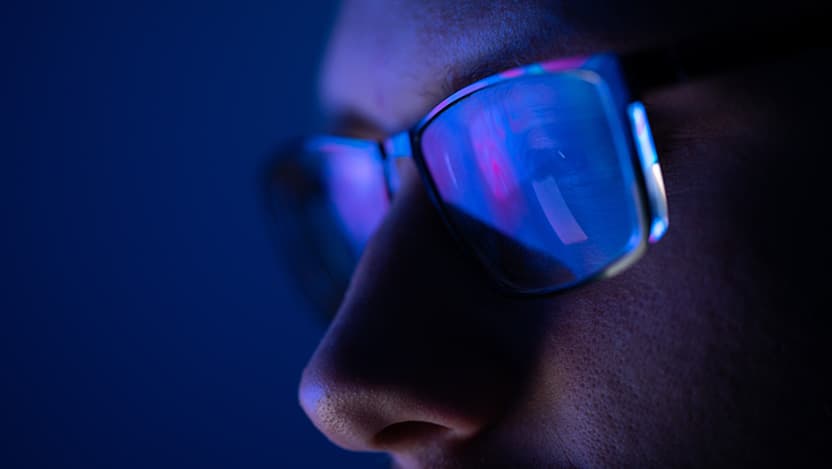Do you need blue light-blocking glasses?

Now that COVID-19 has people spending more time at home on their computers and phones, blue light-blocking glasses — or blue light lenses as they’re sometimes called — have become a trendy accessory.
Blue light-blocking glasses are made for all ages, either with clear lenses or as add-ons to prescription lenses. They’re a growing, $22 million industry
The FDA does not regulate blue light-blocking glasses because they’re not considered a medical device. Yet manufacturers advertise them as tools for reducing eye strain, improving sleep and preventing retinal disease.
Do blue light-blocking lenses help your eyes, or is it all hype?
There’s really not a lot of evidence that shows they help. The science isn’t quite there, especially for the prevention of retinal disease. As far as impacting the sleep cycle and circadian rhythm, blocking blue light or any artificial light before bedtime may be beneficial. But the American Academy of Ophthalmology recommends other things that don’t involve wearing special glasses, like cutting back on artificial light in the evening, including not looking at your phone before you go to bed.
Can blue light-blocking glasses be bad for the eyes?
I don’t think they’re harmful. If someone has tried them and swears they’re helpful, then that’s OK to wear them. I do have some patients who have purchased blue light-blocking glasses and feel like they have less eye strain and eye fatigue, but others have told me they made no difference. Claiming they reduce eye strain is likely an overstatement.
Why does looking at a screen for a long time make your eyes hurt?
As we spend more and more time in front of screens, there is something called Computer Vision Syndrome. When we look at a screen, we don’t blink very often. The lack of blinking makes the eyes dry, causing eye strain and eye fatigue. In my practice, I’ve been seeing an increase in dry eye because people are on their computers all day at home. Wearing a mask may also be contributing because of exhaled air going up toward the eyes.
What can you do to prevent or alleviate digital eye strain or Computer Vision Syndrome?
There are a few things, and they’re all free. One is the 20-20-20 rule. Every 20 minutes, take a 20-second break and look at something that’s 20 feet away. Look out your window. Look at something else. Give your eyes a short rest. If you’re on the computer a lot, you can lubricate your eyes with artificial tears from time to time. Also, reduce the use of devices at bedtime. This is something a lot of people are aware of, but few really follow through on. High-performing athletes, like LeBron James, won’t look at their phones an hour before bedtime because it interferes with their sleep. It takes some discipline, but it’s good for your eyes and your sleep. When wearing a mask, make sure there is a good seal across the top.
What is blue light?
Blue light is part of the visual light spectrum. Much of the light that comes from TV, cellphones and laptops hits our eyes in the blue light spectrum. While there are some studies that show blue light might play a role in the regulation of the sleep cycle, there’s no evidence that blue light is a culprit in causing cataracts, macular degeneration or glaucoma.
Why is blue light suddenly such a bad thing?
Blue light-blocking glasses were first marketed to help with circadian rhythm and the sleep cycle. It’s been trending up for a couple of years now. Now that everyone is working from home, parents are more concerned about being on screens all day, so I guess it’s a marketing opportunity.
Asim V. Farooq, MD, is an ophthalmologist at UChicago Medicine who specializes in corneal transplant and cataract surgeries.

Asim Farooq, MD
Highly skilled ophthalmologist, Dr. Asim Farooq, provides comprehensive care for a wide range of eye conditions, including cataract surgery, corneal transplantation surgery, and correcting common vision disorders (nearsightedness, farsightedness and astigmatism) using refractive surgery.
Learn more about Dr. Farooq